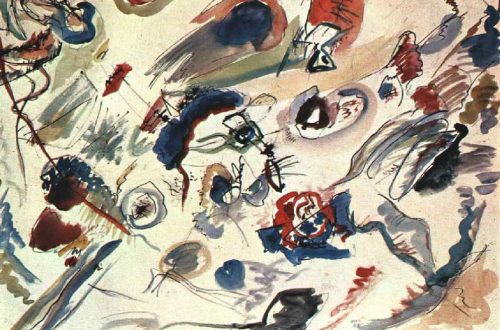James Ensor’s Masks Confronting Death exemplifies his unique, macabre style of painting which set him apart from the painting trends of the early twentieth century and which influenced many artists after him. In this article, Singulart takes a closer look at Ensor’s life and artistic career and analyses the themes and styles present in his work Masks Confronting Death.
Who was James Ensor?
James Ensor (1860-1949) was a Belgian painter and print-maker who had a great influence on Expressionism and Surrealism. He was born in Brussels to English parents and spent most of his childhood in the family curiosity shop, which is thought to have greatly influenced his choice of imagery in his later works, which included masks, carnivals, bright colors and eccentric costumes, interwoven with a sense of drama and satire.

He attended the Academie Royale des Beaux-Arts in Brussels from 1877 to 1880 and first exhibited his works in 1881. Aside from brief travels to France, the Netherlands and London in the 1880’s and early 1890’s, Ensor spent most of his life in Ostend and worked from a studio in his parents’ attic until 1917.
At first, his work was widely criticized and rejected as scandalous, however he continued to paint and exhibit his work which was gradually accepted and acclaimed, with his painting The Lamp Boy (1880) being bought by the Royal Museum of Fine Arts of Belgium in 1895. By 1920 he was exhibiting internationally, and Alfred Barr, the founding director of the Museum of Modern Art in New York described him as the boldest painter of his day.
After this success in the early twentieth century, he began to abandon painting in favour of music, despite his lack of musical training and he remained in Ostend throughout World War II until his death in 1949.
Ensor’s style and influence
Ensor’s early works typically depicted realistic scenes in a dark color palette, however as his style matured he became more preoccupied with the bizarre and surreal and his color palette brightened. His themes included the grotesque, religious, carnivals, masks, puppetry, skeletons and allegories concerned with mortality. Despite his style remaining relatively distinct from other trends in 19th century art, Ensor’s combination of the theatrical, satirical and macabre influenced a wide range of 20th century artists, including Paul Klee, Emil Nolde, Felix Nussbaum and other expressionist and surrealist painters.
What is happening in Masks Confronting Death?

Masks Confronting Death depicts a group of masked figures surrounding a central figure representing Death, who is cloaked in white and wears a frivolous red hat. The masked figures are also dressed in ridiculous costumes, in a combination of reds to the left and more lighter pastel pinks and blues to the right. Set against a blurred pastel background, this composition and focus on the figures and their costumes and masks creates a sense of the theatrical, as if Ensor has captured a scene of a dark comedy, with the main character of death staring out at the audience. The masks are developments of his earlier still-life paintings and were most probably inspired by those found in his family’s curiosity shop. Ensor explained his use of masks, stating: “The mask means to me freshness of color, sumptuous decoration, wild unexpected gestures, very shrill expressions, exquisite turbulence.”
These surreal, masked figures were a symbol that Ensor repeated in many of his works during the 1880’s and it is thought that he used them to symbolize the dark side of society. Indeed, it is the macabre masked figures that provoke the most fear and uncertainty in the viewer, as the figure of Death is mocked and surrounded and seems to almost retreat into his cloak in fear. At the time of Masks Confronting Death, Ensor was also dealing with the recent death of his father, which may have influenced his inclusion of the motif of death and his increased concern with mortality.
Ensor’s painterly technique and his depiction of light in his compositions such as Masks Confronting Death, has been compared to that of the Impressionists and his interest in masks compared with Picasso, Gauguin and Derain’s fascination with primitive masks, however Ensor continued to set himself apart through his sinister and satirical approach.









